Thermal imaging for damp diagnosis – basic competence
…or, getting into building thermography – a review of the TCL (Thermographic Consultancy Ltd) category 1 training process.
Thermal imaging is fairly new to me. I was introduced to the concept of thermal imaging for damp diagnosis in 2011, via the Property Care Association. The PCA are always at the head of new developments in building pathology, particularly where damp is concerned. PCA CEO Stephen Hodgson and his team saw that the technology of thermography had some promise and presented this to members in the form of a day course (see this post from back then – introduction to thermography).
Whilst I was intrigued and could see that thermal imaging could be a valuable tool, I could also see that there was considerable expense in obtaining the level of thermography equipment needed, to locate the often subtle information, useful where damp is concerned. The day course raised many questions due to the depth of knowledge required to get the best out of the equipment. It was clear that in inexperienced and untrained hands, a thermal imaging camera could mislead and bamboozle to a far greater extent than say – an electronic moisture meter.
So I decided to concentrate on my core activities and to put thermography on one side until my company was fully recovered from the knock it took in the recession of 2008 and, until my Health and Safety studies were advanced enough to ease the pace there, and until I had enough cash in the coffers to allow a few thousand pounds on equipment and training. Now that I have a brace of Nebosh certificates, and money in the bank again, that time has arrived. I needed a further incentive though, and that came from two directions:
First was the inspired intervention of my good mate Ross Charters of Complete Preservation. He has been playing around with thermography for a couple of years and has good contacts with one of the most innovative and professional thermography consultants in TCL. Ross and I had talked about taking thermal imaging for damp diagnosis further, but I resisted because I felt that without good training, the equipment would be little more than a gimmick. Ross called me with the news that he had a course lined up with Stuart of TCL, which would comply with the relevant ISO standard for level 1 thermography and best of all, could be split over two weekends, so as not to impose too much pressure on our businesses. I agreed and with lots of cajoling from Ross, spent a few thousand pounds on a state of the art camera, a wide angle lens and the training package TCL had on offer. I’m so glad I did.
The second reason I decided to explore this new technology was the sudden proliferation of damp contractors, ‘certain independent damp surveyors’ (see ADSDS post here), and some housing associations and local authorities, apparently buying and using thermal imaging for damp diagnosis – without training. Some of the claims of damp diagnosis being made on web sites and blogs, citing thermal images as proof of the problem, were clearly wrong. I could see this, even with the benefit of only the 1 day thermal imaging training, which the PCA organised back in 2011. This was my unqualified opinion – it needed fixing. Another course was needed and Ross called at just the right time……
The TCL Category 1 thermography course – A students review.
Ross and I were joined on the course by equine thermographer Elaine Hall DipICAT.
First lets clear up what is meant by Catogory 1 or Level 1 thermography. The ISO 18436-7: 2014 is the internationally accepted standard for thermography qualifications and sets out the three clasifications for thermographers. Levels 2 and 3 are advanced, with category 2 requiring an in depth understanding of the mathematical aspects of heat flow and transmission, and category 3 requiring deeper insight into management, processes, condition monitoring design and specification.
Category 1 cements in place the basic fundamentals all thermographers need, to select equipment, use it and then interpret the incredibly detailed information a thermal imaging camera can collect. Without a basic grasp of the science; the equipment; the pitfalls and, how to use the software behind thermal images correctly, any diagnosis using this technology, could be seriously flawed. I attended the four day course at the National Self-Build and Renovation center in Swindon. This was only my second visit here, following my session talking to Blue Box partner’s delegates about damp diagnosis last year. It’s a great venue and well worth a trip.
The themography course.
Part 1 – weekend 1.
The first weekend was split into two sessions with day one concentrating on the basic science behind thermography. It was back to the high school science lab for sessions on:
Morning Session: Heat transfer – The electromagnetic spectrum – Emittance – Reflectance and transmittance – atmospheric transmission – IR wavebands and lens materials – conduction fundamentals.
Afternoon Session: Fourier’s law – conductivity/resistance – convection fundamentals – Newton’s law of cooling – radiation fundamentals – Plank’s law – Wein’s law – the Stefan-Boltzmann law – and discussion.
Day two was a little less taxing for my old brain as we got to grips with the equipment, demonstrating data acquisition and completing some lab work to see the laws in action…. Brilliant!
We then had 12 days to carry out our practical assignments to show our use and understanding of the initial information. Each student was required to produce a report using the FLIR software and any other software we wanted to analyse thermograms, in a field of our choosing. I chose building thermography, using some images I had already collected on my surveys lately, and completing some new work too, to supplement the report.
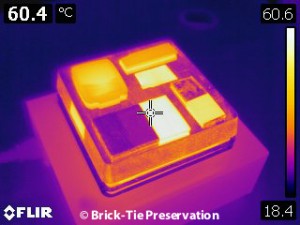
The hot plate is at a constant known temperature – what does your thermal camera say about the emissivity and temperature of the materials on it?
Part 2 – weekend 2
Day 1 morning session: temperature measurement – measurement functions – accuracy – emissivity measurement – avoiding errors – small spot size – distance
Afternoon session: Atmospheric attenuation – support data collection & equipment – environmental data – software – image interpretation – establishing thermal severity criteria – qualitative and quantitative inspections.
Day 2 morning session: calibration – Condition monitoring – maintenance strategies – program management – complimentary techniques – applications – passive & active thermography.
Afternoon session: Overview of standards for thermography – overview of related standards – CPD – further reading and training….
Exam time!
The two hour exam would have been taxing for me, were it not for the very comprehensive and well presented course Stuart and Kevin of TCL put together. As a result I found it quite straightforward and achieved 96%, which I am very happy with.
Am I now a thermography expert? NO WAY!
Thermography is a whole science in itself and really, only the category 3 thermographers like Stuart and vastly experienced guys like Kevin can claim to be real experts in this field. However, the thermal imaging camera can serve me and my clients well; helping me exploit my own expertise in dampness and building pathology; a useful tool to add another layer of information for the benefit of my customers.
I found the TCL level 1 course to be a wonderful thing. The course content and the resources were comprehensive and professionally delivered. Stuart and Kevin are enthusiastic and passionate about thermography and that comes over very clearly; there’s nothing worse than being lectured to by a bored and disengaged tutor – no fear of that here. Thermal imaging for damp diagnosis will be of great benefit now, rather than being a flashy gizmo; more likely to mislead than enlighten. I can see TCL’s training efforts expanding in the future and they deserve to prosper.
If you are thinking of purchasing a thermal imaging camera and want to be trained to use it correctly, I would recommend TCL without any reservation. If on the other hand you’d rather leave the damp diagnosis to damp and building pathology experts, who happen to know how to use thermal imaging for damp diagnosis properly – Complete Preservation and I my little Yorkshire based firm (Brick-Tie Preservation) can help you there.
Dry Rot
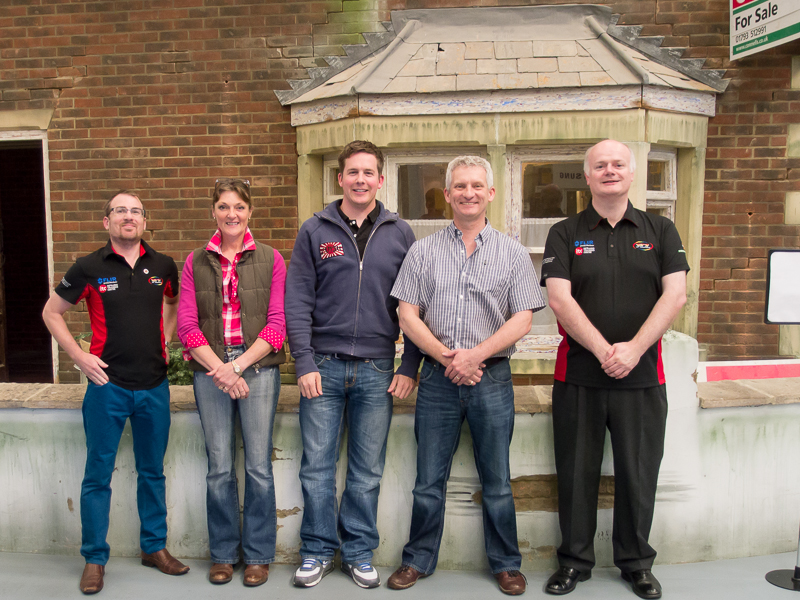
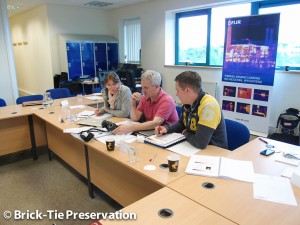
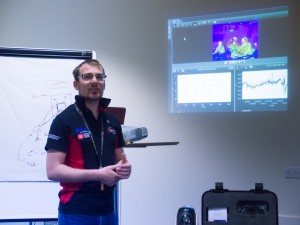
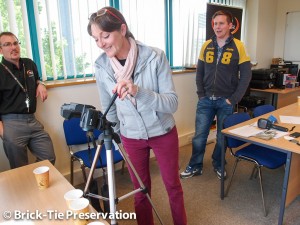
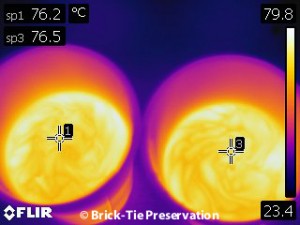
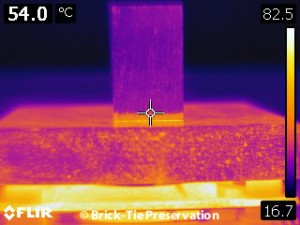
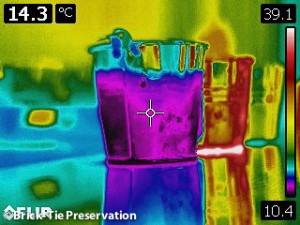
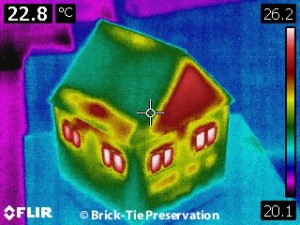
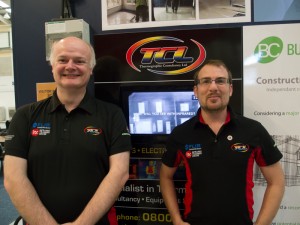
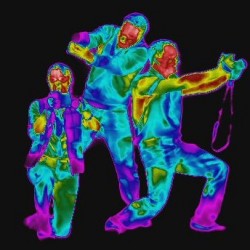
Great article as always Bryan, so pleased i’m now a certified level 1 thermographer. It’s given me a better understanding of the equipment and hopefully my clients will receive the benefits.
What can say about TCL…… well they were brilliant as always and the course was great fun.
Thanks for this very interesting post. It is very needful also. I am very benefitted for knowing about the thermal imaging for damp diagnosis. This post is very informative and it helps me to understand the meaning of thermal imaging for damp diagnosis.
Hi Joseph,
Thanks for looking in and for your kind comments. I am yet to post case study details where the technology has been useful but will do so soon.
Best regards
DryRot